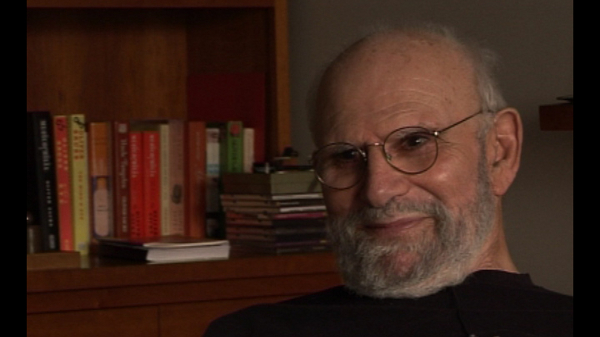NEXT STORY

How the colour-blind painter saw the world
RELATED STORIES

NEXT STORY

How the colour-blind painter saw the world
RELATED STORIES


|
Views | Duration | |
|---|---|---|---|
| 181. The case of the colour-blind painter | 1 | 1035 | 06:38 |
| 182. Ralph Siegel | 339 | 01:31 | |
| 183. Collaboration with Ralph Siegel and Bob Wasserman | 298 | 01:52 | |
| 184. How the colour-blind painter saw the world | 1306 | 01:57 | |
| 185. Colour blindness, Isaacson and achromatopsia in Pingelap | 549 | 06:20 | |
| 186. Ralph Siegel's interesting work | 255 | 02:10 | |
| 187. Isolation, feeling unique and visual neuroscience | 2 | 318 | 05:13 |
| 188. Gerald Edelman's work: reinventions and Neural... | 555 | 05:41 | |
| 189. Gerald Edelman's theory of neural Darwinism | 623 | 01:52 | |
| 190. Where is the individual amongst analogies for the brain? | 407 | 01:57 |


There was also a very good ophthalmologist friend of mine, Bob Wasserman, and we were to form a sort of coalition, a working trio, a collaboration where... I'm sorry, that's the word, a collaboration. We formed a collaboration with several patients over the years, over 20 years, all of whom had various visual problems. The colour-blind painter was one, another was a man who had been virtually blind from birth and who had then been given vision, or some vision, by removal of a cataract, and who was enabled to see but had no idea what he was seeing. He could make no sense of the world visually. All of us in infancy are making sense of the world by correlating visual impressions with... with touch and smell and hearing and later language, but that essential business of constructing an intelligible visual world had not existed for this man, and he was really disabled by being made to see. He had been very comfortable as a blind man, he got around well, he had his own interests in his own life, and whereas now he had to deal with a world which was visually unintelligible. Really an extraordinary business, and here again Ralph and Bob came down to Atlanta where this patient lived, and... and we made a study of him.
Oliver Sacks (1933-2015) was born in England. Having obtained his medical degree at Oxford University, he moved to the USA. There he worked as a consultant neurologist at Beth Abraham Hospital where in 1966, he encountered a group of survivors of the global sleepy sickness of 1916-1927. Sacks treated these patients with the then-experimental drug L-Dopa producing astounding results which he described in his book Awakenings. Further cases of neurological disorders were described by Sacks with exceptional sympathy in another major book entitled The Man Who Mistook His Wife For A Hat which became an instant best seller on its publication in 1985. His other books drew on his rich experiences as a neurologist gleaned over almost five decades of professional practice. Sacks's work was recognized by prestigious institutions which awarded him numerous honours and prizes. These included the Lewis Thomas Prize given by Rockefeller University, which recognizes the scientist as poet. He was an honorary fellow of both the American Academy of Arts and Letters and the American Academy of Arts and Sciences, and held honorary degrees from many universities, including Oxford, the Karolinska Institute, Georgetown, Bard, Gallaudet, Tufts, and the Catholic University of Peru.
Title: Collaboration with Ralph Siegel and Bob Wasserman
Listeners: Kate Edgar
Kate Edgar, previously Managing Editor at the Summit Books division of Simon and Schuster, began working with Oliver Sacks in 1983. She has served as editor and researcher on all of his books, and has been closely involved with various films and adaptations based on his work. As friend, assistant, and collaborator, she has accompanied Dr Sacks on many adventures around the world, clinical and otherwise.
Tags: Robert Wasserman, Ralph Siegel
Duration: 1 minute, 52 seconds
Date story recorded: September 2011
Date story went live: 02 October 2012